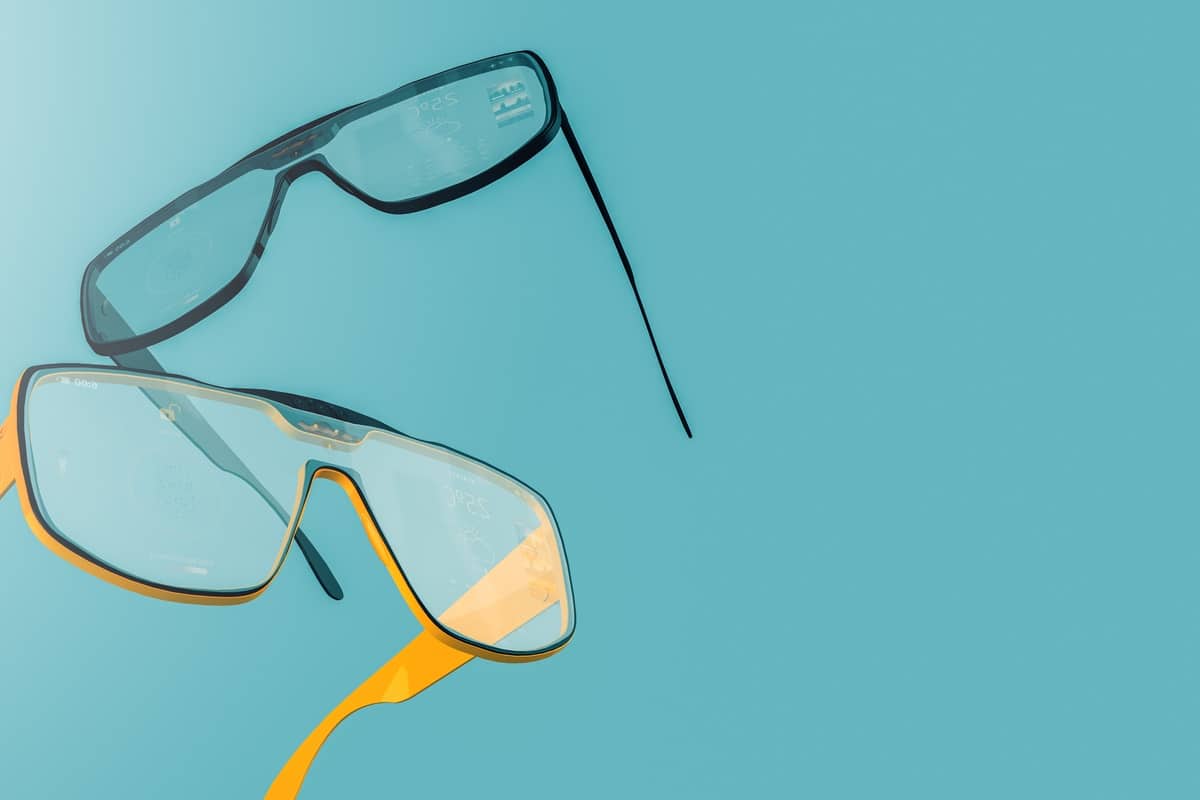Eyeglass frame materials have come a long way in the last decade. While plastic frames were the only option available in the past, today’s manufacturers have come a long way in offering a better variety of options to choose from. Here’s a closer look at the different types of frame options available and the benefits of each material.
Acrylic Eyeglass Frame Materials

Acrylic eyeglasses are made from an acrylic base. Once acrylic frames are made, they’re very difficult to adjust. This partially makes acrylic frames so great because they’re very durable. Many people tend to gravitate towards acrylic frames because of the variety of colors they come in.
Acrylic frames are lighter than many other frame materials, making them comfortable to wear for extended time periods. Plus, acrylic is a strong and durable material resistant to impact and breakage. Also, acrylic frames are hypoallergenic, making them a good choice for people with sensitive skin or allergies.
However, acrylic frames do have some disadvantages to consider. For example, they may not be as flexible as other frame materials and can be more prone to scratching. Additionally, they may not be as suitable for certain types of lenses or prescriptions, such as high-index or thick lenses.
Buffalo Horn and Wood
Buffalo horn and wood are natural materials sometimes used to make eyeglass frames.
Buffalo horn frames are made from the keratin material found in buffalo horns. The material is lightweight, strong, and hypoallergenic. It is also flexible, allowing it to be shaped to fit individual face shapes. Buffalo horn frames come in a range of natural colors and patterns, making each pair of glasses unique.
Wooden frames are made from various woods, including bamboo, walnut, and cherry. Wood is lightweight, comfortable, and eco-friendly. It can also be shaped and finished in various ways, allowing for a range of styles and finishes. Wood frames are often more expensive than other frame materials due to the cost of the materials required to create them.
Both buffalo horn and wood frames offer unique and stylish options for eyeglass wearers. They are both lightweight, comfortable, and hypoallergenic, making them suitable for many people. However, both materials require careful maintenance to keep them looking their best.
Cellulose Acetate
Cellulose acetate is a type of plastic material that is commonly used for eyeglass frames. It’s made from natural cotton fibers and plant-based materials, making it a renewable and eco-friendly alternative to petroleum-based plastics.
Cellulose acetate frames are lightweight, durable, and hypoallergenic. They are available in various colors, patterns, and finishes, making them a popular choice for fashion-conscious individuals. Cellulose acetate can also be molded and shaped easily, allowing for a customized fit. One of the advantages of cellulose acetate frames is their versatility.
They can be made in various styles, from classic to modern, and are suitable for a wide range of prescriptions and lenses. Additionally, cellulose acetate frames can be paired with different lens coatings, such as anti-reflective and scratch-resistant, to enhance their performance and durability.
Surgical-Grade Titanium and Stainless Steel
Surgical-grade titanium and stainless steel are both popular materials for eyeglass frames due to their durability, strength, and corrosion resistance.
Surgical-grade titanium frames are made from a lightweight and strong material that is often used in medical implants. Titanium frames are hypoallergenic, making them a good choice for people with sensitive skin. They are also corrosion-resistant, making them suitable for people who live in humid or salty environments. Titanium frames are available in a range of styles and finishes, from classic to modern.
Stainless steel frames are also lightweight, durable, and corrosion-resistant. They are popular for active individuals due to their strength and flexibility. Stainless steel frames are also affordable and available in a range of styles and finishes, including matte and shiny finishes.
Deciding on the Right Type of Eyeglass Frame Materials

Ultimately, the best eyeglass frame material for you depends on your needs and preferences. Your eye doctor can help you choose the best material for your prescription and lifestyle, and offer advice on how to care for and maintain your frames. If you’re ready to discover the right eyeglass frame materials for your lifestyle, schedule an appointment today.




